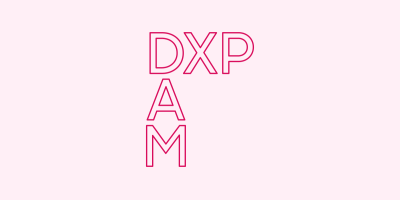Enterprise Information Management System (EIM Technology) Overview

Nate Holmes
Sr. Manager, Product Marketing
Managing all of your product information and content is one of the most complex challenges you can face as an organization. Typically, this vast amount of information is managed across fragmented silos and systems, but it doesn’t have to be that way. The right enterprise information management system (EIM) can help you manage documents, content, and product information (including extensive product catalogs) for all of your company’s needs.
Using an EIM tool can help you get the most value from your information, secure it, distribute it, ensure compliance, and make it easily accessible to the right people and systems. That means you can work more efficiently across distributed global teams, coordinate remote workforces, and create new omnichannel customer experiences with greater ease and higher-quality results. EIM can mean many things to many different organizations, so we’ll start by defining enterprise information management.
What is enterprise information management (EIM)?
| Enterprise information management (EIM) is the combination of technology, standards, and processes used to produce, store, manage, and distribute product content and information through the digital asset life-cycle. |
Every enterprise has different EIM needs. Take all of your product information and digital assets for example. You could have a yearly catalog of 30,000+ SKUs with multiple product variations for each. That means you need to handle all the information and content about each variant. And you still need to manage every information-heavy area of your operation — including merchandising, marketing, training, sales, customer solutions, and product development.
The discipline of EIM includes everything from your production guidelines for product images to the technology you use for your automated content workflows. No matter how healthy your processes and teams are, your EIM software can still either make or break their ability to deliver the results you need.
What is EIM software?
| EIM software is the technology platform that gives you the power to store, manage, and distribute all the content and product information your enterprise needs to succeed. It can be a cloud-based solution to manage digital assets or built internally. Ideally, your EIM software creates a central source of truth for your content, product information, and all the digital assets that are crucial to your enterprise operations. |
In many organizations, EIM software is a bundle of siloed applications and information is even stored on employee hard drives. That can be a big problem. What happens when you need the newest version of the company logo for a marketing campaign and the only logo file is on the computer of an employee who’s gone on a retreat without wifi? With an EIM platform, that problem doesn’t have to happen.
And the benefits of EIM software are much bigger than that. You can use it to automate complicated workflows and deliver return on investment (ROI) by simplifying digital transformation. An EIM tool can make all of your product information and digital assets available to teams, processes, and systems across the globe. That leads to more agility in many areas that are crucial to the success of your business.
Why is enterprise information management important?
Enterprise information management is important for any organization that wants to power sustainable growth, increase efficiencies across teams, and get ahead of digital transformation. Global enterprises that are managing remote workforces and sharing information across time zones can benefit from a secure central source for product information and digital assets.
Anyone who wants to compete in an omnichannel world needs a solid EIM strategy to adapt to a continuously evolving digital landscape. When your information is organized and easily accessible, it can be turned into new digital products and experiences on the fly as customer behavior shifts. This type of agility is crucial if you want to build omnichannel customer experiences that consistently deliver value.
What are examples of enterprise information management tools?
Like any enterprise software category that matters, you have plenty of options for enterprise information management tools. Make sure your EIM software matches your roadmap for the future, integrates with essential apps, and provides dedicated customer support. Here are three of the most trusted and proven EIM solutions on the market you can choose from.
OpenText
OpenText is an EIM software that’s used by companies in every industry from energy to the public sector. It helps to drive sustainable growth and productivity through information management. OpenText makes it faster, easier, and more cost-effective for organizations of all sizes to adopt innovative new products and features.
- Build a modern workplace by seamlessly connecting content with digital business
- Modernize customer engagement with data-driven experiences across the customer journey
- Optimize global commerce and sustainable supply chain operations
- Secure valuable and sensitive information and improve cyber resilience
M-Files
M-Files increases the productivity of knowledge workers, ensures a seamless digital experience, strengthens collaboration, enables business continuity, and reduces business risk. This trusted EIM tool helps to organize, manage, and connect information across global teams.
- Smart connections across your business
- Automations that keep business moving
- Secure, controlled content
- Flexible integrations
Acquia DAM (Widen)
Acquia DAM is a combined digital asset management (DAM) and product information management (PIM) solution that simplifies how your digital assets, product specs, and marketing copy are delivered to market. Keep your teams collaborating, coordinating, and in control of your brand across the content lifecycle. Acquia DAM delivers the centralized foundation for your entire content lifecycle and creates operational efficiencies by providing a central source of truth for your content.
- Catalog, control, and deliver rich media assets from a central source of truth
- Enrich product data with marketing copy and digital assets for distribution
- Track and measure assets, and build site performance dashboards
- Streamline collaboration, reviews, and approvals with online proofing
Looking for the right EIM technology for you?
EIM is the combination of technology, standards, and processes used to produce, store, manage, and distribute product content and information through the digital asset life-cycle. The software is what makes it possible for you to work across global teams, empower remote workforces, and create omnichannel customer experiences. Now that you know what EIM means and what the technology can do for your business, it’s time to winnow down your options.
One way to make sure you can get the most out of EIM technology is to adopt a combined DAM and PIM solution. More than 800 of the world’s most respected brands use Acquia DAM to store, manage, and publish their online product content and information.
Request, watch, or click through a free demo to see how Acquia DAM can help you with enterprise information management.
Note: This article was originally published on Widen.com


